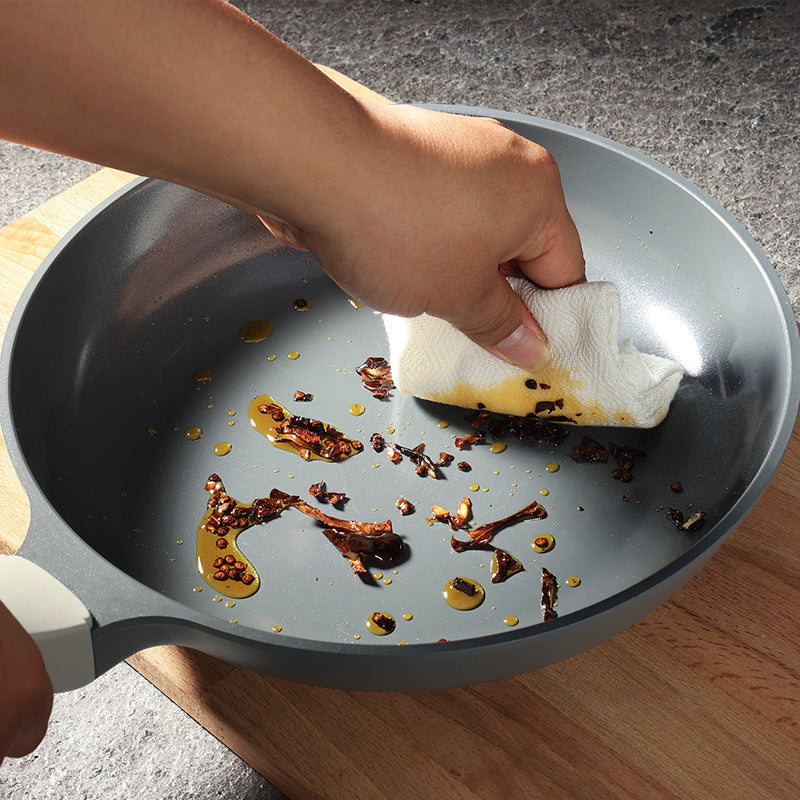The Complete Guide to Maintaining Your Non Stick Cookware
Follow along with our must-have tips and tricks to ensure your Non Stick Pans actually remain non stick.

Before Cooking
1.Wash Firstly
Hand wash your pans with warm, soapy water to remove any dirt or debris left over from the manufacturing and shipping process.
2.Dry Thoroughly
Wipe dry with a soft, non-abrasive dish towel to avoid scratching. The bottom surface of your pan should be dry before touching a burner.
During Cooking
1.Preheat Your Pan Properly
Pre-heat for up to 90 seconds on low to medium heat only before adding oil. Avoid leaving an empty pan on a hot burner, unless over very low heat.
2.Low To Medium Heat
Use pans on low to medium heat when cooking. Overheating can wear away the non-stick coating. Our Non Stick Pan is oven safe up to 302F.
3.Less Oil Or Butter
Your food will effortlessly glide on your nonstick pans, so less is more when it comes to oil or butter. 1-2 tablespoons is more than enough to lightly coat the entire pan surface. Allow 20-30 seconds to pre-heat before you add food.
4.Steer Clear Of Cooking Sprays
Avoid using oil sprays or cooking aerosols, as they can create buildup in the pan over time, which is very hard to remove and can ruin your pan.
5.Use The Right Utensils
Metal utensils with rough edges may damage your non-stick coating. Stick to wooden, silicone, plastic, or nylon products. Always be sure to cut or dice food on a separate surface and not inside your pan.
6.Graceful Landing
Carefully place pans on and off stovetops. Sliding across metal stovetops may damage the steel base.
After Cooking
1.Prevent Thermal Shock
To avoid taking a hot pan and placing it in cold water. This causes thermal shock, which can cause degradation of the non stick coating. Instead, wait for the Pan to cool completely before washing it.
2.No Dishwasher, No Problem
Our non-stick coating makes cleaning a breeze. we highly recommend hand washing Non Stick Cookware. The most washes can be done in under one minute with just soapy water and a non abrasive sponge (leave the steel wool out of this). Be sure to clean both the interior and exterior, including the bottom, of your Cookware to prevent staining.
3.Breaking Bonds
If food gets stuck onto the surface, fear not! Simmer soapy water over a low heat then gently scrape away with a sponge or non-abrasive scrubber. Rinse and repeat if needed.
4.Store Your Non Stick Correctly
Placing Non Stick Cookware near other metal or abrasive objects risks scratching your Non Stick surface, and this includes stacking your Cookware in a drawer or the cupboard without protection. We suggest placing a trivet, towel, cloth napkin, or oven mitt between pans to protect the surfaces of your Non Stick and other Cookware.
5.Don't Store Food in Them
Some acidic foods can damage the coating when left in the Pan for extended periods of time, so it's best to let your Pans do the cooking and designated food storage containers do the storing.
